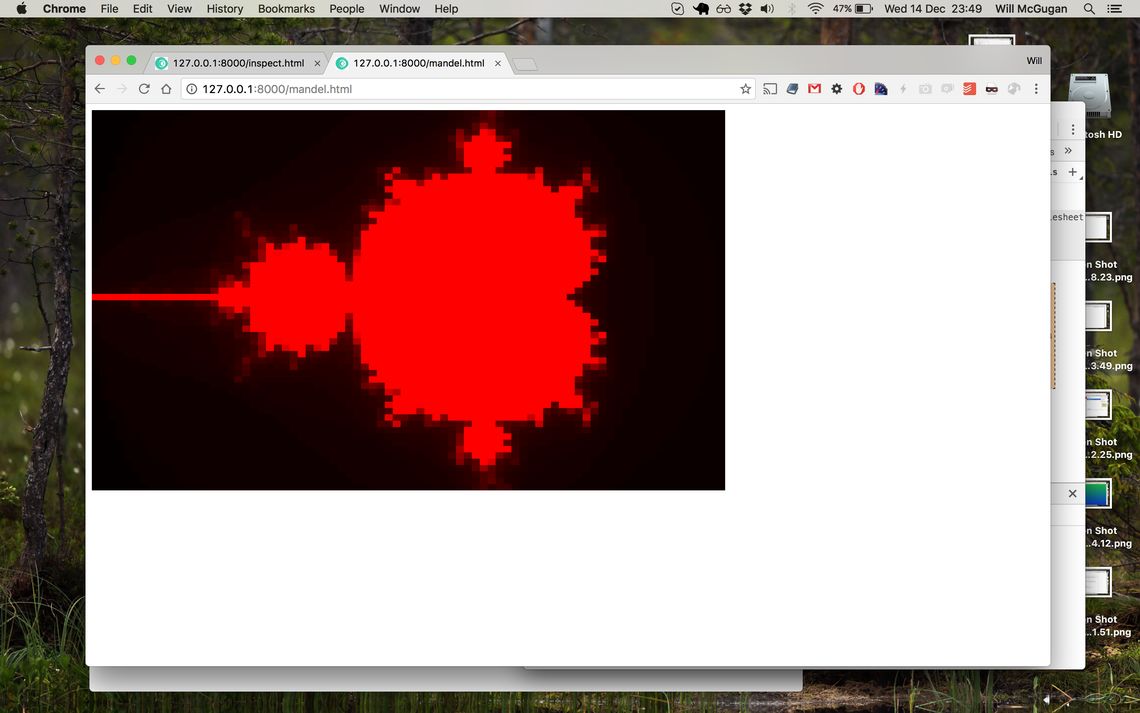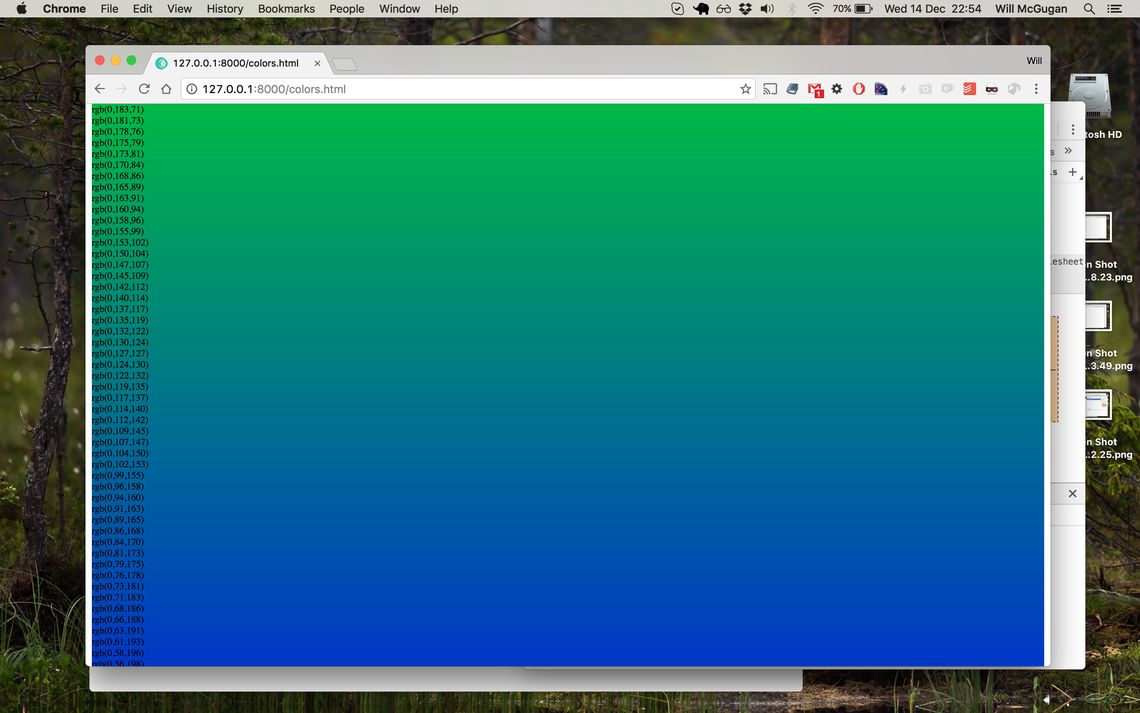I like to imagine components of a Python web framework as personalities. Here's how I would imagine a conversation between a typical view and template would go down:
View Here's that data I just looked up.
Template Don't like it.
View What's wrong with it?
Template Format's wrong.
View You can change the format if you like.
Template Don't wanna. You change it.
View OK. Fine. I'll change it for you.
Which is why I wanted Moya templates to be very capable in processing data, but still keep them designer friendly. If the template data is sane then the template should be able to deal with it, without going back to the back-end developer.
I've got to a position where I love working with Moya templates. I honestly think you can do more with Moya templates than any other Python template language (without writing an extension).
So I've come up with a few (admittedly far fetched) examples of Moya templates, and I'd like to ask; can your python template do this?
Render a mandelbrot set?
<style>
table {border-spacing:0px;}
td {width:8px; height:8px;}
</style>
<table>
{% let xsize=80, ysize=60, max_iteration=50, color=color:'red' %}
{% for pixy in 1..ysize %}
{% let y0 = (pixy / ysize) * 2 - 1 %}
<tr>
{% for pixx in 1..xsize %}
{% let x0 = (pixx / xsize) * 3 - 2, x=0, y=0, iteration=0 %}
{% while x * x + y * y < 4 and iteration < max_iteration %}
{% let xtemp = x * x - y * y + x0 %}
{% let y = 2 * x * y + y0 %}
{% let x = xtemp %}
{% let iteration = iteration + 1 %}
{% end-while %}
<td style="background-color:${color * (iteration / max_iteration)}"></td>
{% end-for %}
</tr>
{% end-for %}
</table
Render all the dates in the current month?
<ul>
{% for date in .now.month_start.date ... .now.next_month.date %}
<li>
${localize:date}
</li>
{% endfor %}
</ul>
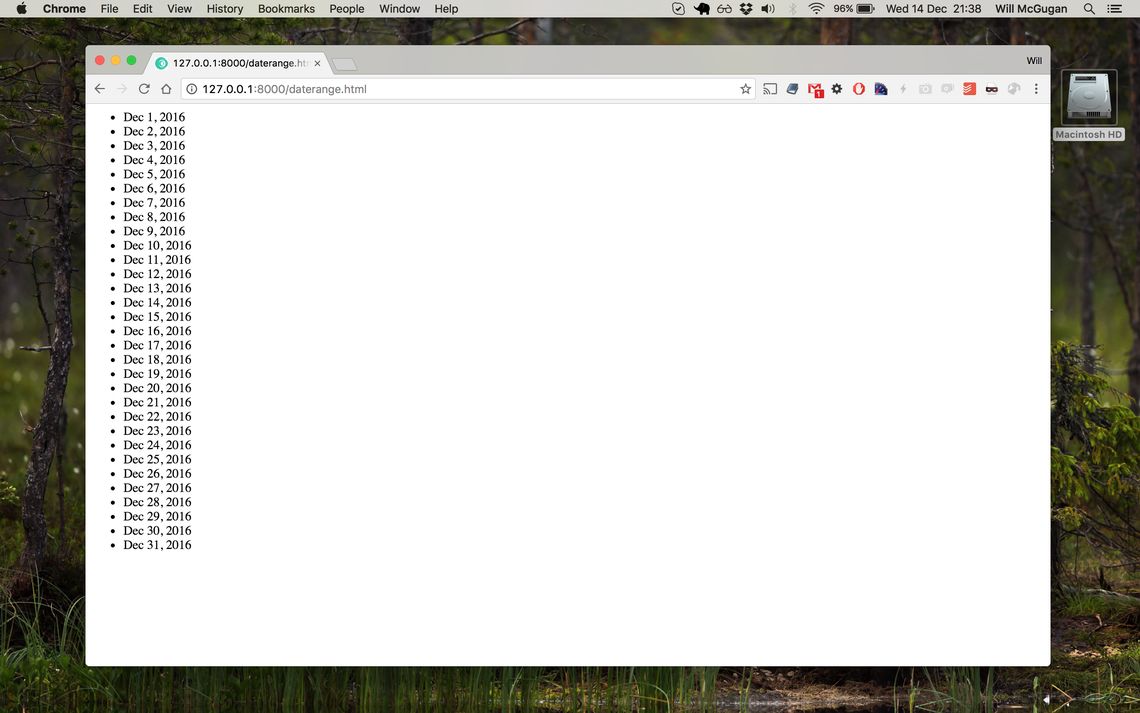
What sorcery is this? The .now is a request local value that contains the current date + time. It has an attribute called month_start which is the first day of the month. That has a date attribute which contains just the date. So .now.month_start.date gives the first date of the current month.
The ... is an exclusive range operator, which creates a range of values between two end points.
Oh, and the localize: modifier renders the date according to the current locale.
Render Markdown?
{% markup-block as 'markdown' %}
# Markdown is awesome
You *should* be able to use it **everywhere**.
{% end %}
Inline styles for Emails?
{% premailer %}
<style>
.highlight
{
padding:16px;
background-color:red;
color:white;
font-size:32px;
}
</style>
<div class="highlight">
Buy my product!
</div>
{% end-premailer %}
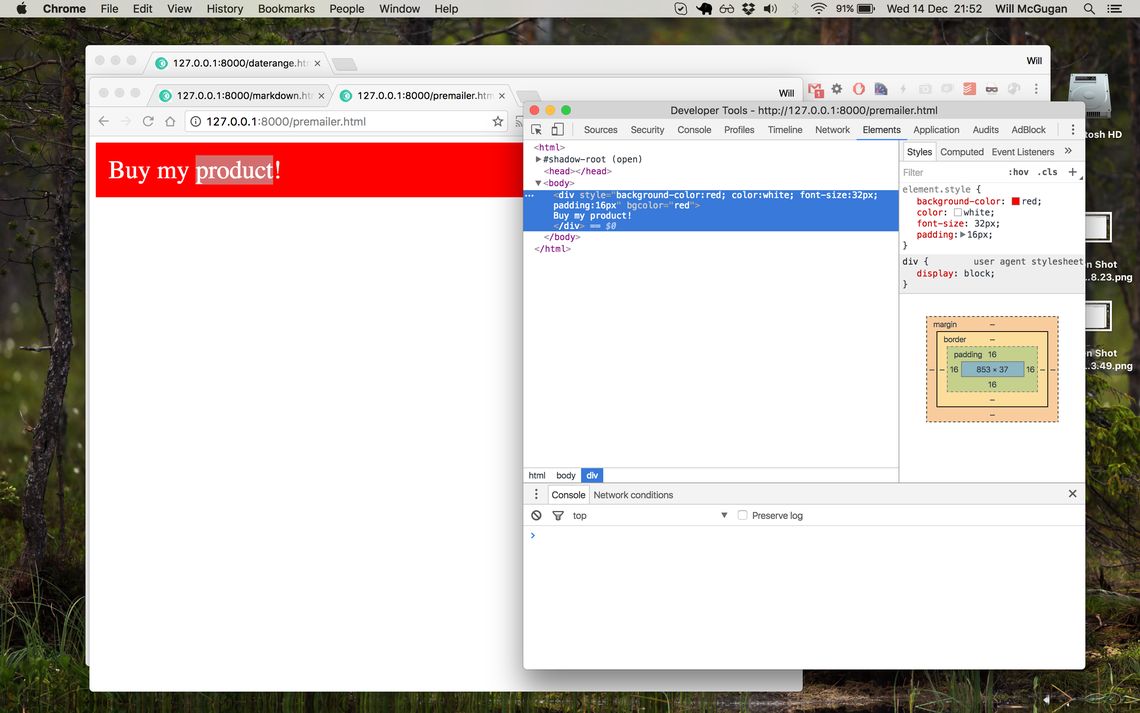
Because email clients don't like style tags or external stylesheets. The {% premailer %} tag inlines them for you.
Work with colors?
{% let start = color:'lime' %}
{% let end = color:'#0000ff' %}
{% for i in 1..100 %}
{% let color = start + (end - start) * (i / 100) %}
<div style="background-color:${color};font-size:12px;">
${color.rgb}
</div>
{% end-for %}
Inspect template data?
{% inspect dict:.now %}
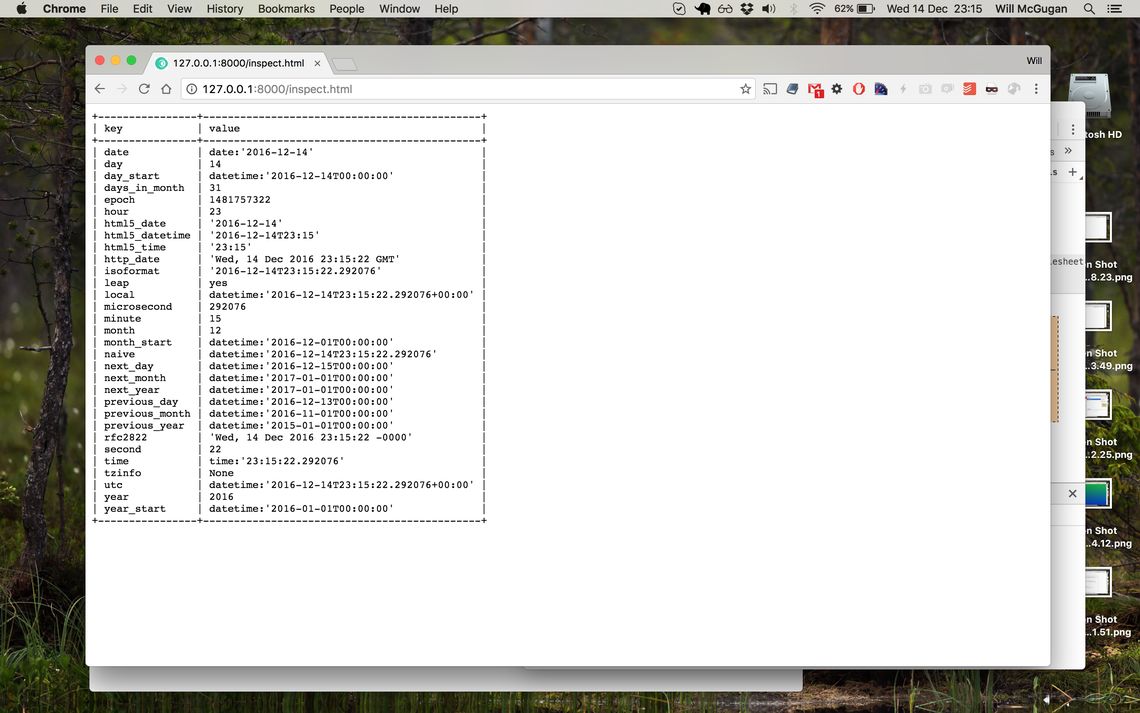
Handy for debugging, the {% inspect %} tag summarizes any template variable (request, database object etc) in the output. Here we see all the properties of a date/time object.
Get the current price of Bitcoin
<ul>
{% for k, v in sorted:items:parsejson:get:"https://www.bitstamp.net/api/ticker/" %}
<li><b>${k}</b> ${v}
{% endfor %}
</ul>
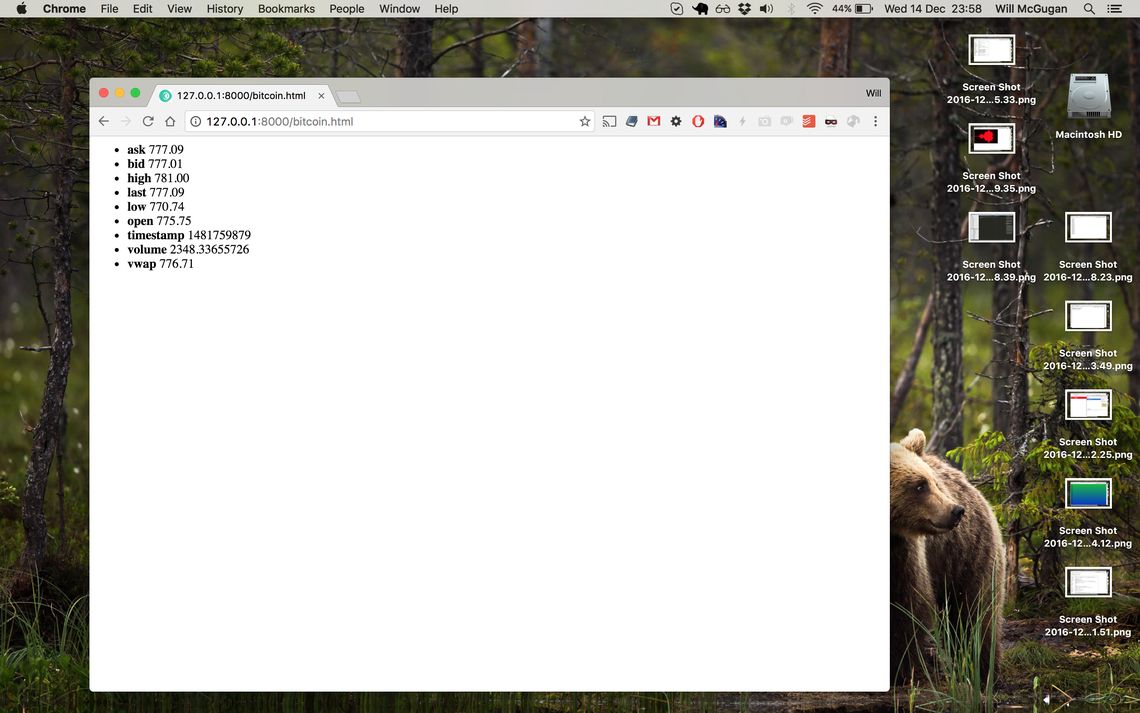
The get: modifier does a HTTP GET to a URL. Hopefully the rest of that line is self explanatory...
Tell you exactly where the error is?
A cryptic error message can cost you minutes fixing a bug. If you are iterating quickly, it could add up to an hour or more in a day. Which is why Moya templates are fanatical about error reporting.
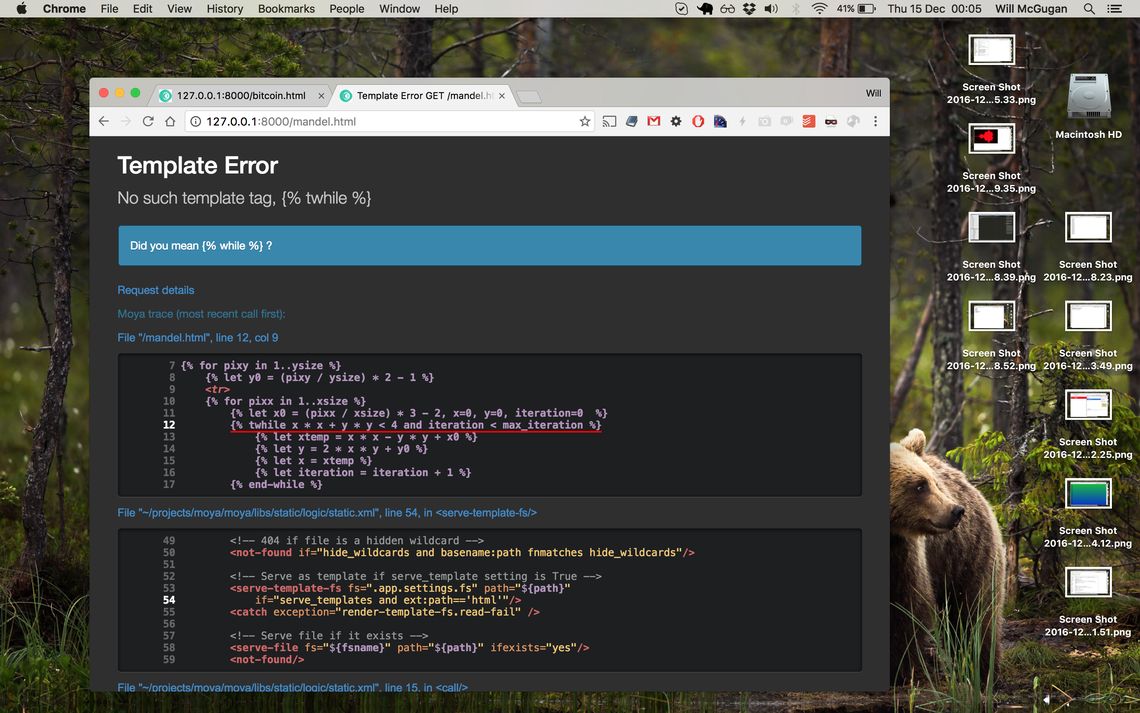
Clear error messages that tell you what and where the problem is.
If your template is nested, i.e. included from another template, the error messages will show you the full include stack.
And more often or not, there is a diagnosis that tells you how to fix the issue.
You can check out Moya on Github.
